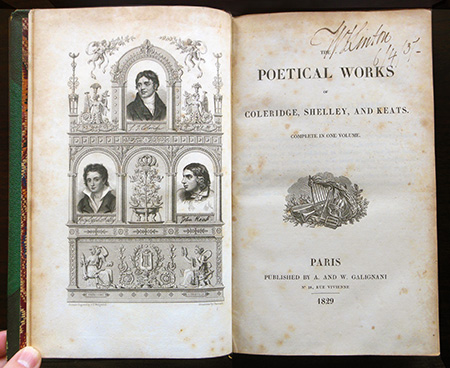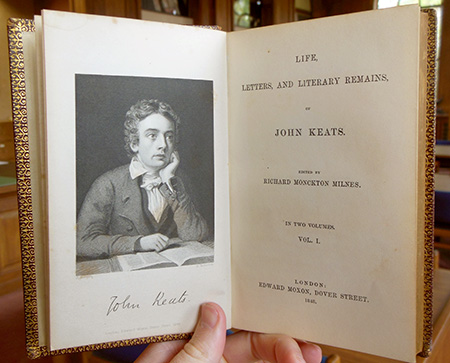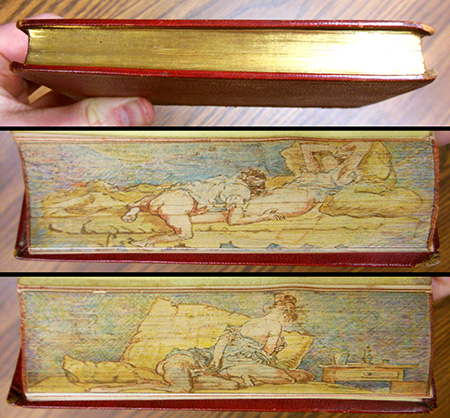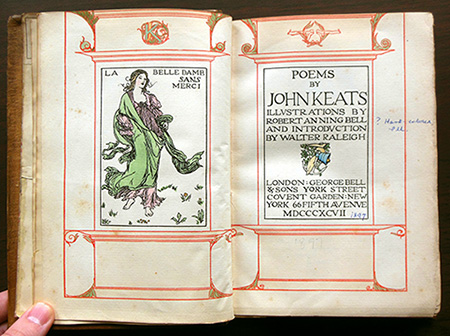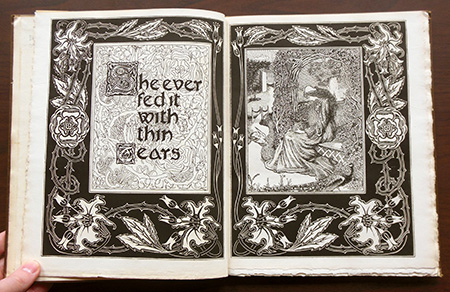Things of Beauty: New acquisitions of poetry by John Keats
We like to think of Special Collections as a working laboratory in which students can study not just texts, but also books’ physical aspects. What can we learn about a book’s history from its binding, illustrations, or style of printing? Looking at how a book was “packaged,” can we tell how previous generations of readers might have interpreted it? What was it like to experience a book when it first came out, as opposed to reading it in a modern edition?
Students in a course on English Romantic Poetry recently visited us to view materials from our collections and ask questions just like these. We were pleased to be able to offer them several nineteenth-century editions of the poetry of John Keats, which we acquired during the fall semester. Here are some highlights...
The earliest volume is The Poetical Works of Coleridge, Shelley, and Keats (1829). Only a few of Keats’s poems were published during his short lifetime, and although some came out after his death in 1821, this volume is the first collected edition of his works. It also has the added advantage of being an early anthology of poems by two of his contemporaries, Samuel Taylor Coleridge and Percy Bysshe Shelley. This particular copy is inscribed “W. J. Linton, 6/4/37” – possibly William James Linton, an engraver, political reformer, and publisher whose journal, The National, attempted to put good literature (including poems by Keats) into the hands of working-class readers.
Today, we take it for granted that poets like Keats, Shelley, Byron, Coleridge, and Wordsworth are literary giants. But their fame developed slowly, and, in Keats’s case, posthumously. The Life, Letters, and Literary Remains of John Keats (1848), edited by Richard Monckton Milnes, was his first full-length biography and was largely responsible for creating his reputation as a serious poet. Letters of John Keats to Fanny Brawne (1878), also recently acquired, gave Victorian readers further insight into the life of this lovelorn poet. It also convinced them of his masculinity (earlier readers had seen him as somewhat effeminate).
Despite the sexual repression of the day, many Victorians were drawn to Keats because of his sensuality. One of our recent acquisitions is a striking example of how people in the nineteenth century associated him with the erotic. LSU’s copy of The Poetry of John Keats (1853) features a double fore-edge painting showing a man and a woman making love. Hidden by the book’s gilded edges, the paintings are only visible when the text block is fanned out. For one reader, this book—and, by extension, Keats’s poetry—was clearly an intimate object.
Another unique book in the library’s collection is Poems by John Keats (1897). Printed on Japanese vellum at the Chiswick Press, the edition is rare in its own right, but this particular copy is one of a kind, having been hand-colored by Gloria Cardew and bound in patterned leather by Annie S. MacDonald, a Scottish bookbinder affiliated with the Edinburgh Arts and Crafts Club and the Guild of Women Binders. (For more information on MacDonald, see Marianne Tidcombe’s Women Bookbinders, 1880-1920.)
Keats was also admired by the Pre-Raphaelites and, in the 1890s, by followers of the Arts & Crafts movement, who repackaged his works, imbuing them with a sense of medievalism but also a dreamy modernism. Our list of recent acquisitions includes a good example of this: Isabella, or the Pot of Basil (1898). Reminiscent of William Morris’s Kelmscott Press edition of the works of Chaucer, it features elaborate borders and black-and-white illustrations by W.B. MacDougall.
As Keats himself wrote, “A thing of beauty is a joy forever.” Stop by sometime and read those very words in these beautiful books!
